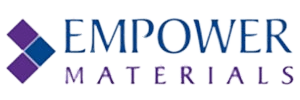Many research organizations have investigated the use of QPAC® polyalkylene carbonate in 3D printer applications. The distinctive decomposition properties which include contaminant free burnout and low temperature of QPAC® can be applied to this technology. There are many varieties of Additive Manufacturing (AM) Technology.
.jpg)
Image Credits: Alex_Traksel/shutterstock.com
Additive Manufacturing (AM) Technology
The QPAC® has a different function based on the AM technology. In Binder Jetting Technology such as Laser Sintering technology, the binder is placed onto a powder bed by inkjet head layer by layer. A laser is then applied to sinter the powder. If the final product is used in an application where contaminants cannot be accepted then the QPAC® is the ideal choice for a binder in this system.
The QPAC® is also being broadly assessed in another type of 3D printer technology, known as Fused Deposition Modeling (FDM). The filament of a thermoplastic is unwound through a coil and then extruded via a nozzle and then will solidify to make layers. The object is created by extruding molten plastic to form layers as the material hardens instantly after extrusion from the nozzles. Here, the QPAC® can be utilized as the thermoplastic. If the end part requires the polymer to be decomposed (such as a mold), then the QPAC® can be an ideal choice, again due to its decomposition properties.
AM Technology may use polymer, ceramic, metal or glass as the mass to construct the 3D shape. In many cases these powders are sensitive to high curing temperatures. Since the QPAC® can be removed at lower temperatures than other binders, the QPAC® binder is the ideal material for these applications.
Conclusion
Thus, there are many varieties of AM Technologies that are investigating the use of QPAC® as either a binder or a material in their printer systems. The QPAC® polymers being tested rely on the final application. On the whole, the QPAC® 25 and QPAC® 40 tend to be more flexible and provide good adhesion strength when used. The QPAC® 100 and QPAC® 130 provide higher stiffness and rigidity when desirable. All offer the same advantages of low temperature debind and clean burnout.

This information has been sourced, reviewed and adapted from materials provided by Empower Materials.
For more information on this source, please visit Empower Materials.